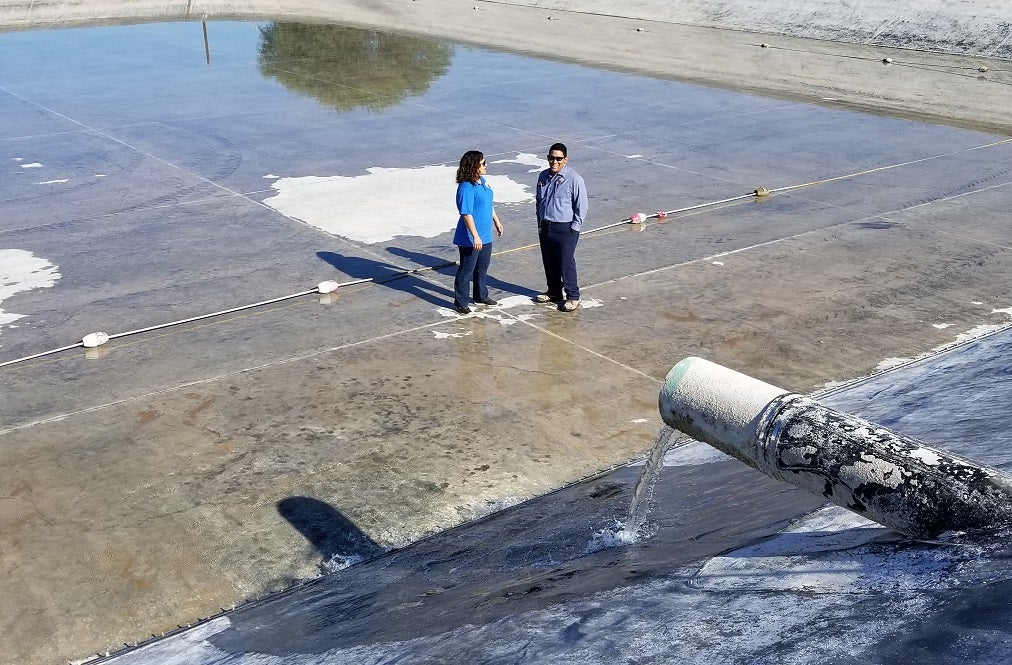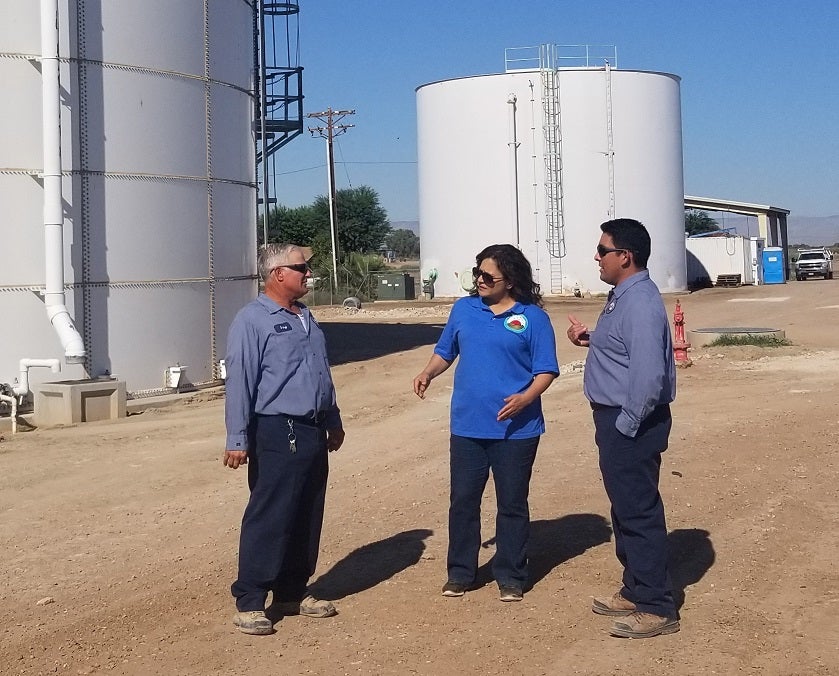Gov. Gavin Newsom has signed long-overdue legislation to dedicate up to $130 million a year to provide clean, affordable drinking water to more than 1 million Californians who still lack access to this vital resource. The legislation creates the Safe and Affordable Drinking Water Fund to help cash-strapped, smaller water systems, which primarily serve rural, low-income communities.
The Seeley County Water District, located in Imperial County approximately 20 miles from Mexican border, is one of these communities.
Miriam Rosales and Aaron Garcia call Seeley home and have made it their mission to provide better water service to the town’s 2,000 residents. Miriam, a 46-year resident of Seeley, began at the district as the board’s secretary and became administrative general manager in 2017. Aaron began working in the water sector after being laid off as a music teacher and worked his way up to become Seeley’s chief operator in 2018.
Both participated in the Leadership Institute, a program originally developed by the Rural Community Assistance Corporation (RCAC), Self Help Enterprises and Environmental Defense Fund (EDF) to help disadvantaged communities more effectively engage on water-related decision-making and policy. RCAC, EDF, and Imperial County’s Community and Economic Development Office customized the program to address the issues of Imperial County.
Understanding Miriam and Aaron’s challenges is helpful to understanding how a state as prosperous and innovative as California can struggle to provide safe drinking water to all its residents. Here are some excerpts from a recent conversation I had with them about their work.

Miriam Rosales, administrative general manager, and Aaron Garcia, chief operator, had made it their mission to provide better water to their community while leading the Seeley County Water District.
Tell me a little bit more about Seeley.
Miriam: The town itself hasn’t changed much. Maybe a few streets were added. Our water district has an annual operating budget of $800,000 and we serve about 466 accounts. We are considered a severely disadvantaged community.
What are some of your biggest challenges?
Miriam: I work with outside agencies to get grant funding. The grants for water systems are amazing and work wonders for a small water system like us.
But the grants require us to go with the lowest price for equipment and materials, and sometimes those materials don’t work. We are at the mercy of the lowest bidder.While there's still more work to be done to guarantee clean and affordable drinking water, the creation of the Safe and Affordable Drinking Water Fund is an important step in the right direction. Share on X
For example, our water meters were installed through a grant and now they are failing. We’ve lost 30 to 40, about one-third of our system.
Aaron: If you have one-third of the meters not working, that is potential revenue completely lost.
Miriam: Another issue is not having enough customers in a small community. It means water rates and sewer rates are a little higher than in a larger community. A lot of our equipment is old and needs replacing. It’s a big cost, and there is no money.
What are your rates?
Miriam: The average rate $89 per month for water and sewer. I hear my community when they say they think it is too expensive. They are living paycheck to paycheck. But I don’t know how to balance that with our costs.
Aaron: They don’t see all the work behind the scenes. They just know they turn the tap on and they get water.
How are you addressing these issues?
Miriam: We decided to look into a different kind of meter, with less moving parts, lower costs and a really good guarantee. We are working collaboratively with the county on this.
Why did you participate in the Leadership Institute?
Miriam: We were both fairly new in our roles at Seeley, and we really wanted to be the most effective leaders for our community.
What were the most valuable takeaways from the Leadership Institute?
Miriam: We realized we are not alone with these issues.
After the first class, I also realized our rates weren’t going to work. Without the institute, I would have continued with the same rates to 2021 or 2022, and we would have been trouble. I gained a greater understanding of our district’s fiscal situation. That was very important.
Aaron: One thing I remember most was learning about personality types and how each type deals with conflict. Understanding personality types has been very helpful to working with the eight people on my crew and getting what I needed from them, especially in high-stress situations, like if a water line bursts and you have to fix it quickly.
The second installment of the Leadership Institute involved using an app developed by the EPA to map out all of your system’s assets and needs. How was this helpful?
Miriam: With the tool that we used, I was able to see visually where we are going to be in 20 years. It pointed out we need to bring in more money to keep up the maintenance on our system. It’s one thing to tell the board and public this is the situation. But the Leadership Institute gave us something to show the board – a spreadsheet and graph – to really drive that point home, and that really helps.
I have been truly impressed by Miriam and Aaron’s dedication to their community. We still have a long way to go to ensuring small water districts like theirs have the financial resources necessary to serve their communities. But the creation of the Safe and Affordable Drinking Water Fund is one important step in the right direction. My hope is that the state acts quickly on the next step: channeling this money quickly to the communities who need it most.

Gary Thornburg (left), lead operator of the Seeley County Water District, works closely with Miriam Rosales, administrative general manager, and Aaron Garcia, chief operator.









